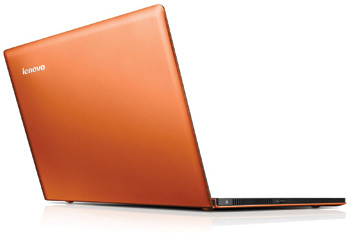As 2011 winds down, I find myself wondering: Where have all the netbooks gone? Maybe it was all those tablets that hogged the spotlight this year, but, for whatever reason, the netbook is yesterday’s news. So chip giant Intel has created a whole new category of computer it’s hoping will be the next big thing in 2012. Prepare yourself for the Ultrabooks!
 “Ultrabook” is actually an Intel trademark. They’re hoping computer manufacturers will build machines based on their general Ultrabook blueprint and powered by their thin, low-voltage mobile processors, achieving sleek, lightweight laptops that run cool with excellent battery life. If you can picture the MacBook Air, the machine that sets the standard for the class, you’ll have a good sense of the Ultrabook: Kind of like a netbook that spent 2011 holed up with a personal trainer and a cosmetic surgeon. Other attractive traits include quick start-up times, mainstream performance and pricing, and flash-based solid state drives replacing optical and hard drives. Intel is hoping that by 2013, Ultrabooks will make up 40 percent of the U.S. laptop market.
“Ultrabook” is actually an Intel trademark. They’re hoping computer manufacturers will build machines based on their general Ultrabook blueprint and powered by their thin, low-voltage mobile processors, achieving sleek, lightweight laptops that run cool with excellent battery life. If you can picture the MacBook Air, the machine that sets the standard for the class, you’ll have a good sense of the Ultrabook: Kind of like a netbook that spent 2011 holed up with a personal trainer and a cosmetic surgeon. Other attractive traits include quick start-up times, mainstream performance and pricing, and flash-based solid state drives replacing optical and hard drives. Intel is hoping that by 2013, Ultrabooks will make up 40 percent of the U.S. laptop market.
Based on the Lenovo IdeaPad U300s I reviewed, that could happen. First of all, the U300s is sleekly elegant with a sandblasted aluminum body that’s just .6 inches thick. That’s actually thinner than the MacBook Air at its thickest point, though the U300s lacks the Air’s distinctive tapered design. Instead, it has a pleasing, flat design with slightly lipped edges that lend it a book like silhouette. Unfortunately, one of the trade-offs for the U300s’ elegant, one-piece body is that there are no access doors for servicing batteries or adding to the 4 GB of built-in RAM.
 The U300s weighs only 2.9 lbs and it has a wafer-thin 13.3-inch glossy, 1366 x 768 display, not quite the resolution of the MacBook Air, but identical to all other Ultrabooks currently out there. There’s a 1.3 megapixel webcam and mic in the bezel. To keep it slim, Lenovo left off an Ethernet port and an SD card slot, which I particularly miss. It does have Bluetooth, though, and WiDi. That’s no typo. WiDi is a wireless display output that lets you send your display to big screen TVs (adapter required). There’s also a full- size HDMI output, a 3.5 mm headphone jack, a USB 2.0 port, and a USB 3.0 port for faster, duplex data transfers from a connection that uses less power.
The U300s weighs only 2.9 lbs and it has a wafer-thin 13.3-inch glossy, 1366 x 768 display, not quite the resolution of the MacBook Air, but identical to all other Ultrabooks currently out there. There’s a 1.3 megapixel webcam and mic in the bezel. To keep it slim, Lenovo left off an Ethernet port and an SD card slot, which I particularly miss. It does have Bluetooth, though, and WiDi. That’s no typo. WiDi is a wireless display output that lets you send your display to big screen TVs (adapter required). There’s also a full- size HDMI output, a 3.5 mm headphone jack, a USB 2.0 port, and a USB 3.0 port for faster, duplex data transfers from a connection that uses less power.
The IdeaPad U300s has a comfortable, chiclet keyboard that’s pretty unique. It’s “breathable,” helping keep the laptop remarkably cool though it uses an exhaust fan so quiet it’s barely detectable. Likewise, it’s hard to tell where the stereo speakers are mounted, since the bright sound seems to pour out through the keyboard. The oversize glass touchpad is flanked by generous palmrest space. With its 256 GB SSD drive enhanced with Lenovo’s Rapid Drive technology, the IdeaPad boots up fast. From a complete shutdown, I had it up and running in 20 seconds. Battery life per charge is up to eight hours, or 30 hours in standby mode.
The IdeaPad U300s model I tested is Lenovo’s top-of-the-line offering, powered by a very capable 1.8 GHz second generation Intel Core i7 (2677m) dual core, four-thread processor. At $1500, so equipped, it seems a bit beyond Intel’s “mainstream pricing” for Ultrabooks. On the other hand, that’s in line with a similarly equipped MacBook Air.
With Acer, Asus, and Toshiba already joining Apple and Lenovo in Ultrabook production, this is going to be a fun class of laptops to watch in 2012.


